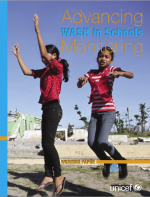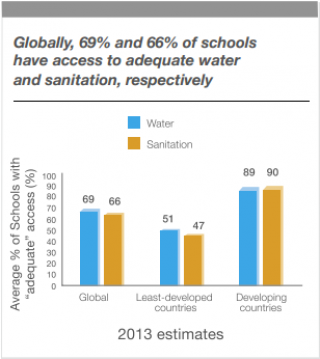UNICEF publication provides first global overview of water and sanitation in primary schools.
Published on: 27/04/2015
 Globally, school water and sanitation coverage both increased by six per cent between 2008 and 2013. This is one of the key messages from a new UNICEF working paper "Advancing WASH in schools monitoring".
Globally, school water and sanitation coverage both increased by six per cent between 2008 and 2013. This is one of the key messages from a new UNICEF working paper "Advancing WASH in schools monitoring".
The paper presents the best data available for the coverage of water, sanitation and hygiene (WASH) services in primary schools gathered from 149 countries for the period 2008-2013. It also compares current national WASH in Schools (WinS) monitoring indicators against global guidelines.
By providing this information the publication responds to the 2012 Call to Action, Raising Even More Clean Hands. It also aims to promote and support improved monitoring of WinS so that coverage indicators can be included in the forthcoming Sustainable Development Goals (SDGs). This is in line with the recent call by an international group of WASH NGOs, led by Simavi and IRC, to incorporate WASH targets for schools, health centres and the workplace in the post-2015 development agenda.

The key messages of the paper are:
The paper concludes with recommendations for action for both the national and international levels.